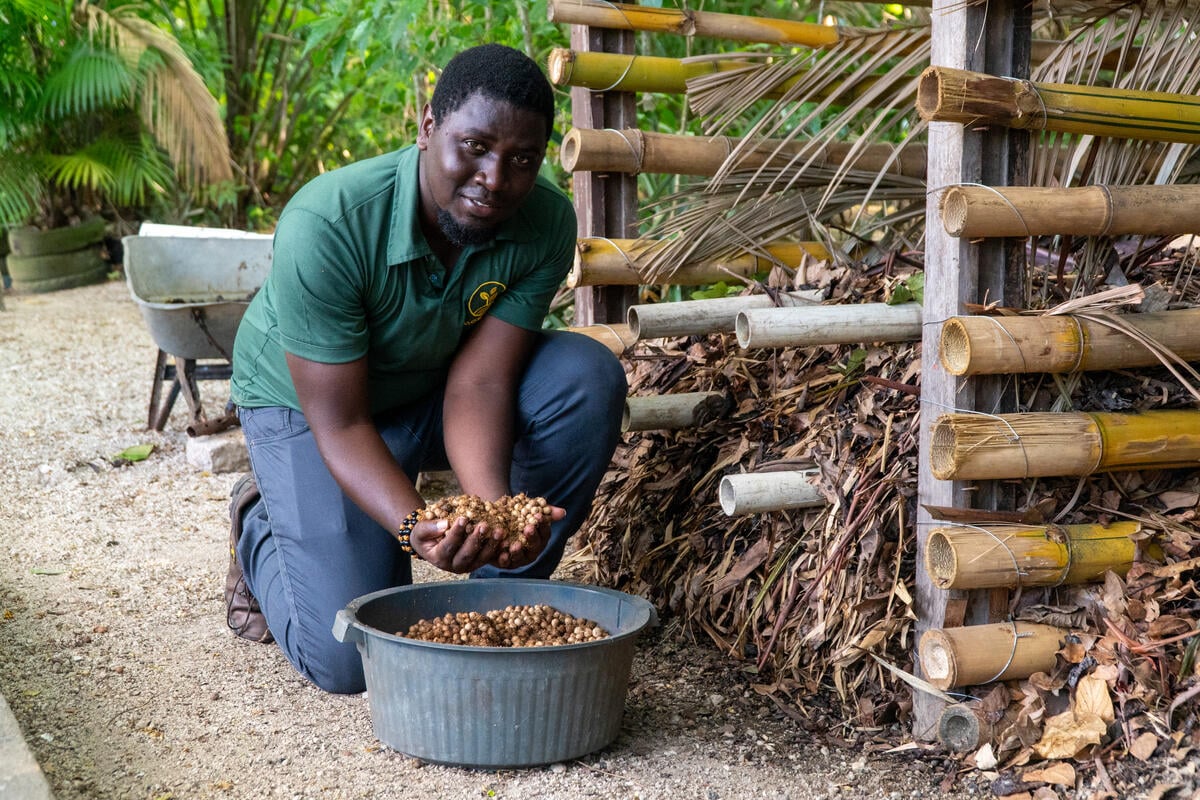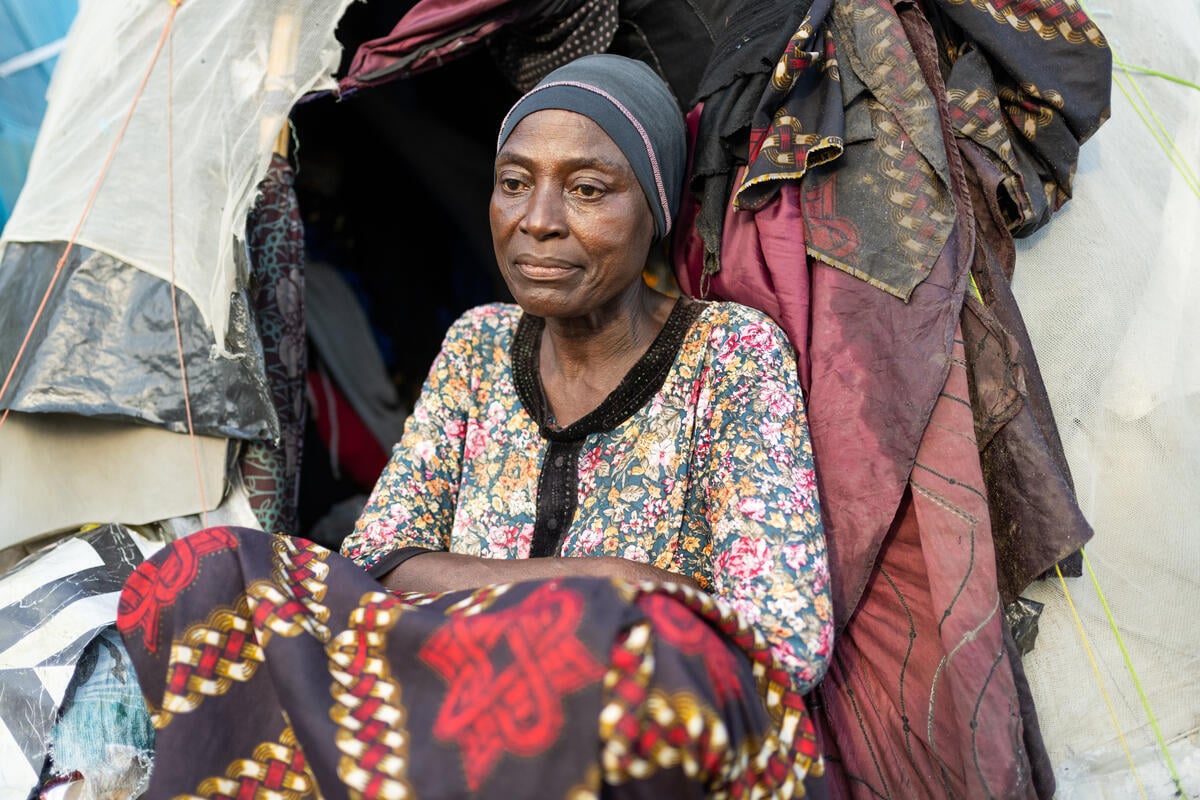Helping refugee farmers in South Sudan adapt to climate change
Helping refugee farmers in South Sudan adapt to climate change

Awad Usman, a refugee from Sudan, stands in his sesame field in Maban, South Sudan.
Written on a small piece of paper, folded inside a tiny metal casing and attached to a worn leather strap is a prayer that Awad Usman, 37, ties to his arm every morning before making his way to the farmland where he grows sesame and sorghum.
He touches the metal case dangling from his arm. “Every year we renew it [the prayer]. If you see things are not going well, you renew it again. I put this one in at the beginning of the rainy season because I thought the prayer before was failing.”
Awad is a refugee from Sudan. He fled to Maban, in South Sudan over 10 years ago during the war that separated the two countries. He still lives in the same refugee camp in Maban where he has gradually built a home for his family and a living as a farmer.
Four rivers flow through Maban County, which is in northern South Sudan’s Upper Nile State. During the rainy season, from May to October, these rivers threaten the lives and livelihoods of Maban’s residents.
“The last flood that came here flooded all of the garden and destroyed all of the sesame,” recalls Awad. “When the waters came, they reached the top of the bridge that we used to cross from our homes to the farmland, so we couldn’t check on our crops for five days. When we made it here, we saw that everything was destroyed.”

Awad Usman weeds his sesame field. Flooding in 2019 destroyed his entire sesame crop.
Multiplying extreme weather events, such as flooding and drought, are compounding the threats faced by people already forced to flee conflict and violence. At the COP29 summit taking place in Azerbaijan this week and next, UNHCR, the UN Refugee Agency, and refugee climate activists are calling for more funding and support to survive and adapt to the impacts of the climate crisis.
South Sudan ranks as one of the five countries in the world most vulnerable to climate change and refugees and people forced to flee are some of those hardest hit. Rainfall has decreased by 10 to 20 per cent since the mid-1970’s, according to the UN Environment Programme. Conversely, the risk of catastrophic flooding has increased year on year. Recent flooding in South Sudan has affected over 1.4 million people and displaced 271,000, according to the UN Office for the Coordination of Humanitarian Affairs (OCHA).
In a good year, Awad harvests enough sesame and sorghum to sell half of it, but if production is low, there is barely enough to feed his family. “After the destruction from the last floods [in 2021], I had to go to the market and work here, there and anywhere to cover my family’s needs,” he says.
Food insecurity is a major problem affecting both refugees and the local host community, says Alex Noel Kilong, an Assistant Livelihoods and Economic Inclusion Officer with UNHCR, the UN Refugee Agency, in Maban. He oversees projects that aim to address the impacts of climate change on livelihoods and food security for around 300,000 people in the area, including refugees and the host community.
“This is a country that has suffered from conflict for a long time. So, flooding comes in and adds to the burden that the communities have been exposed to,” he says. “Livelihoods are affected by flooding; animals are washed away; road networks are broken; medical facilities are also cut off from communities.”
UNHCR and its partners are working to support refugee farmers like Award who have little or no resources to adapt to an ever changing climate. They negotiated for the land that Awad and other refugees farm and provided them with cash to buy seeds and farming equipment. They have also provided training on new farming practices such as diversifying crops so they are able to grow year round and are less hard hit if one harvest is affected by flooding. Farmers have also been introduced to new crops like sesame, that can be sold at a higher price than crops like sorghum.

Alex Noel Kilong, an Assistant Livelihoods and Economics Inclusion Officer with UNHCR's Maban office, helps refugees to build a footbridge ahead of expected flooding in the area.
Alex also leads a project that has built 2 kilometres of dykes across the county to protect farmland, access roads, an airstrip and the homes of Awad and his neighbours from flooding. It is hard, time-consuming work, but it is effective.
The project includes bridge construction so that Awad and his community do not get cut off from their farmland when the rivers swell.
These interventions are key to helping refugee farmers like Awad to build a sustainable future and remain self-sufficient.

Awad and his family head out to their fields. They fled Sudan 10 years ago and rely on farming for a livelihood.
This season, Awad worked hard to make sure his sesame matured and was harvested before the floods arrived, a practice he learned from UNHCR and its partners. The dykes that now surround his farmland helped ensure that his crops were more protected and, although there was some flooding, he was still able to harvest a good yield.
He and his family spend their days in the fields, sewing, weeding, and harvesting, depending on the time of year. They sing and joke with each other as they wield tools in the hot sun.
“I sing a proud song to my crops, it gives me happiness,” says Awad.










